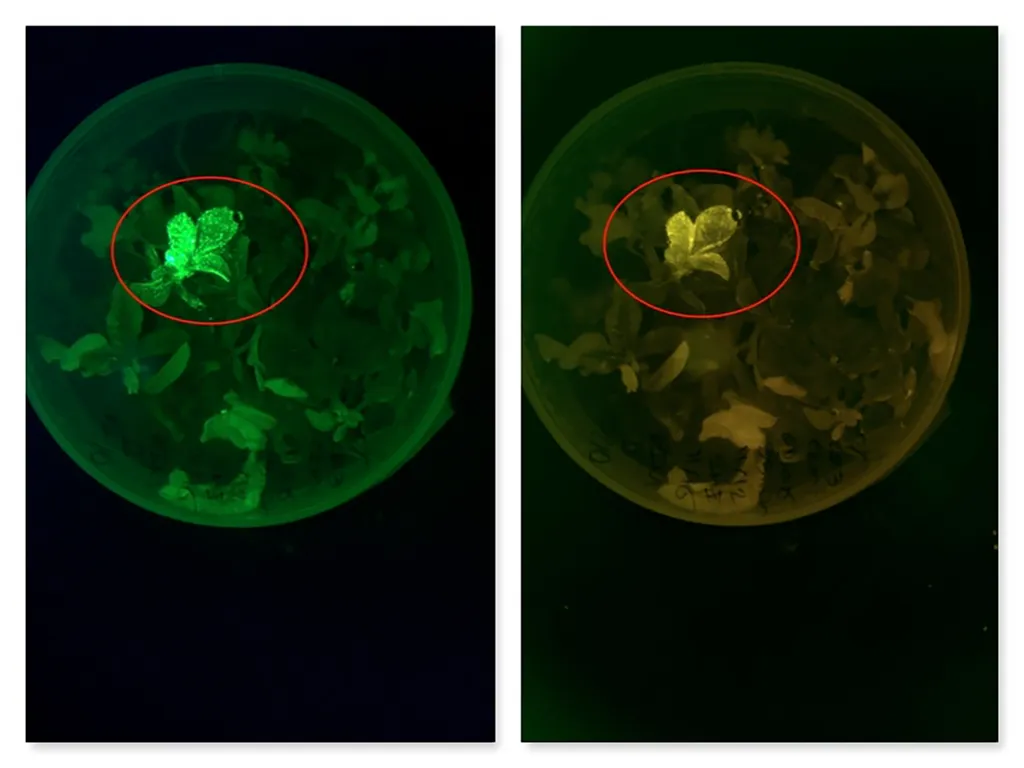In the heart of America’s breadbasket, a quiet revolution is taking place. InnerPlant, a seed technology company, has achieved a significant milestone in the world of agriculture. For the first time in history, their CropVoice disease alert network has detected an early fungal infection in soybeans, weeks before symptoms were visible to the naked eye. This real-time detection, which occurred in Yankton County, South Dakota, and northern Cedar County, Nebraska, has sent out the first-ever disease alert to farmers, providing them with crucial time to protect their yields.
The CropVoice network, currently deployed across Illinois, Iowa, Nebraska, and South Dakota, uses InnerSoy sensors—soybeans genetically engineered to emit an optical signal when infected—to take the guesswork out of farmers’ disease management decisions. When an active infection is detected near their fields, farmers receive real-time alerts via text, empowering them to make informed decisions promptly.
Dylan Tacke, a Nebraska Agronomy Sales Representative, shared his experience with the new technology. “I knew I was going to spray for white mold, but I wasn’t sure about when,” he recalled. “When I got the alert, I knew that it was time, and it was good to have confirmation before putting money down in the field.” This sentiment echoes the broader implications of InnerPlant’s innovation. By providing concrete data, farmers can optimize their resource use, potentially reducing unnecessary applications of fungicides and other treatments.
InnerPlant’s network covers 50,000 acres across the Midwest in 2025 and is scaling to over half a million acres in 2026 through resale agreements with key agricultural retailers. Shely Aronov, CEO and co-founder of InnerPlant, highlighted the significance of this detection. “This detection is the first time in the 10,000-year history of agriculture that an infection was detected in real-time and farmers notified of the threat,” he pointed out. “The value of data that confirms an infection weeks before symptoms are visible in the field fundamentally changes how farmers manage disease and is key to driving the commercial demand we’re seeing to expand the reach of the CropVoice network.”
The CropVoice network is backed by a local field team with over 60 years of combined agronomy experience and eight Ph.D.s spanning functional genomics to infrastructure systems engineering. Once the plants in the network signal, that information is amplified with laboratory analysis, boots-on-the-ground scouting, local agronomic expertise, weather data, and advanced modeling to alert of fungal disease in the network.
Brandon Hunnicutt, a large Nebraska farmer, underscored the importance of real-time data in farming. “Farming involves a great deal of risk – from weather to insects to disease – and often we lack real-time data to make well-informed decisions,” he said. “CropVoice takes the guesswork out of soybean fungicide decisions by giving a warning of infection early enough to take action and protect yields.”
As farmers face increasing pressures from climate change, market fluctuations, and the need for sustainable practices, innovations like CropVoice offer a beacon of hope. By providing early detection and real-time alerts, InnerPlant’s technology not only helps farmers protect their yields but also contributes to more sustainable and efficient agricultural practices. The ability to act preemptively can lead to better resource management, reduced environmental impact, and ultimately, more resilient and productive farms.
Farmers can subscribe to the CropVoice network through select local agricultural retailers, marking a step forward in the integration of advanced technology into everyday farming practices. As the network expands, it holds the promise of transforming disease management in agriculture, one alert at a time.

